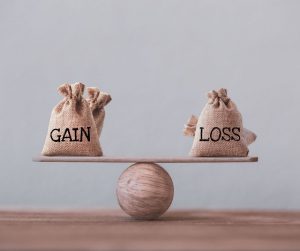
What is capital gains tax
Capital gain is the difference between what you paid for an asset (less any fees incurred during the purchase) and what you sold it for (less any fees incurred during the sale).
Capital gains tax (CGT) is the levy you pay on the capital gain made from the sale of that asset.
It applies to property, shares, leases, goodwill, licences, foreign currency, contractual rights, and personal use assets purchased for more than $10,000.
Your car, main residence, depreciating assets used solely for taxable purposes, and assets bought before 20 September 1985 are exempt from capital gains tax.
However, if your main residence sits on more than two hectares of land (4.94 acres), or you’ve not lived in the property for the entire period of ownership, you’ll only be afforded a partial CGT exemption on your home.
How much is capital gains tax?
This is where you find out that the wording ‘capital gains tax’ is a bit confusing as it’s not actually a stand-alone tax, but forms part of your income tax.
If you’ve bought and sold your property within 12 months, your net capital gain (the difference between the sum of your capital gains and the sum of your capital losses) is simply added to your taxable income, which, in turn, increases the amount of income tax you pay.
However, if you’ve owned the property for more than 12 months, calculating your final taxable income is a little bit more complicated than adding your net capital gain to your earned income.
Unless, of course, you’re a business. In that case, you’re not eligible for any discounts and simply pay a 30% tax on your capital gains. Meanwhile, self-managed super funds apply a 33.3% discount to their capital gain, and pay 15% tax on the remaining amount.
Speaking to your accountant is the best way to find out how capital gains tax would be calculated for your particular circumstances.
When does it apply?
Capital gains tax is calculated as part of your income tax. Your net capital gain, forms part of your assessable income in whatever tax year you sold your property.
How to avoid capital gains tax?
The best way to reduce how much tax you pay on your capital gains is to keep all relevant receipts.
Any costs incurred during the purchase or improvement of the property can usually be added to your cost base. The higher you can prove your cost base to be, the lower your capital gain.
What happens if I make a capital loss?
You should keep any relevant paperwork that proves you made a capital loss, as this loss can be carried across into future tax years and deducted from future capital gains.
For example, if you make a capital loss of $20,000 in 2018 and a capital gain of $60,000 in 2019, you can subtract the 2018 loss from the 2019 gain, leaving with you a net capital gain of $40,000.
Then, if you’re eligible, you can apply the 50% discount on the remaining $40,000, leaving you with a final capital gain of $20,000, which you can then add to your assessable income.
Unfortunately, you can’t subtract capital loss from your assessable income, to reduce how much tax you pay.
For example, if you make a capital loss of $50,000 on a property sale and earn $50,000 from employment income that same year, you still have to pay tax; you can’t simply subtract your capital loss from your employment income, to reduce it to $0 for tax purposes.
The ATO doesn’t impose a time limit on how long you can carry forward a net capital loss. Which means, if you made a capital loss in 2015 and didn’t make a capital gain until 2018, you can still subtract that 2015 loss from that 2018 gain.
This article does not constitute financial or legal advice. Please consult your professional financial and legal advisors before making any decisions for yourself.